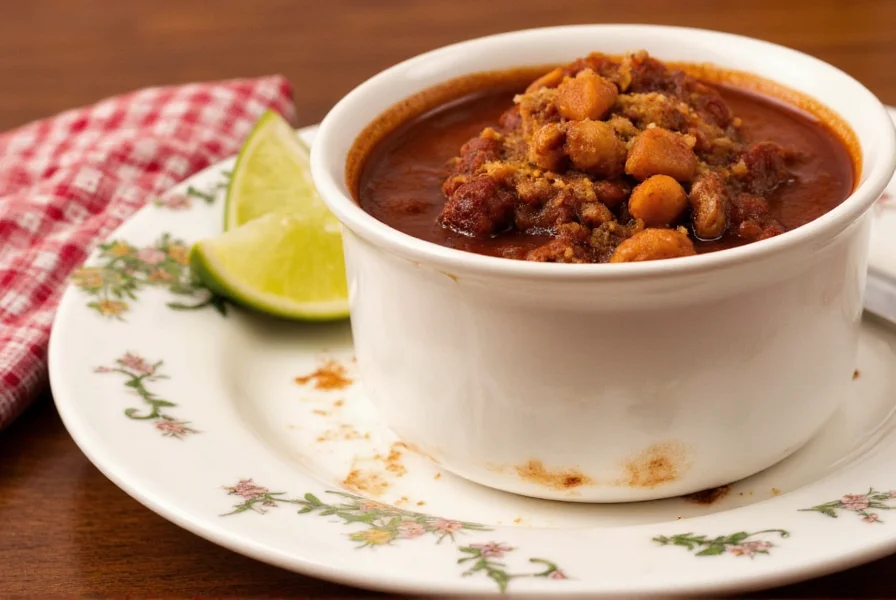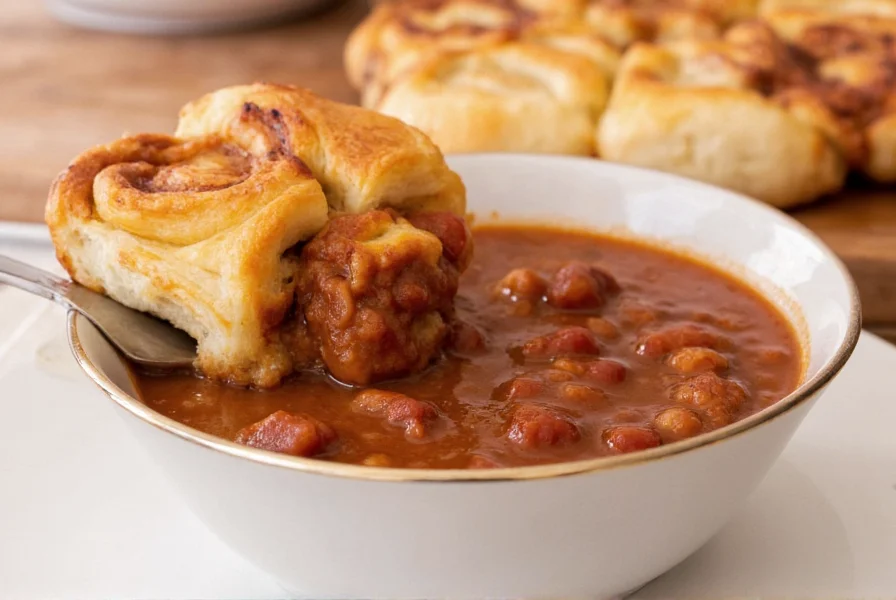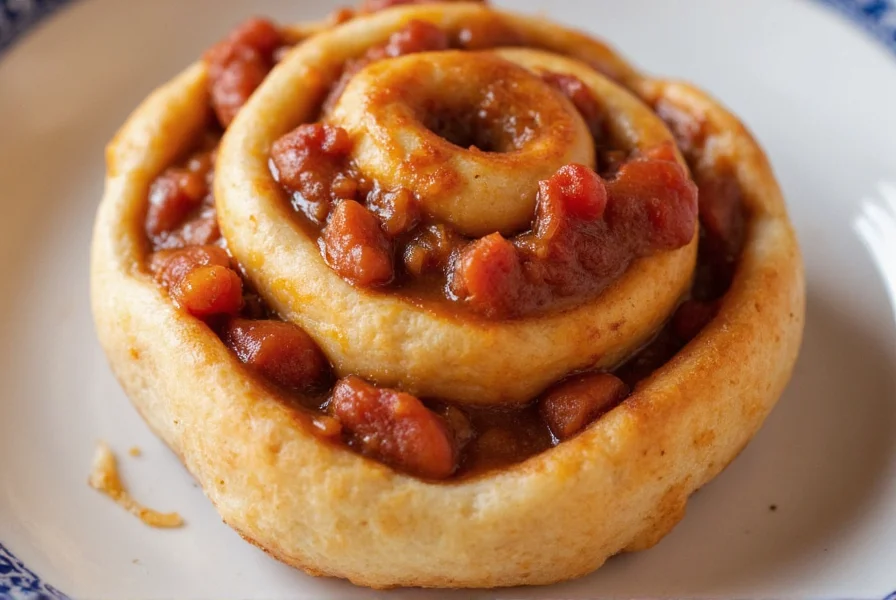While cinnamon rolls and chili seem like culinary opposites—one a sweet, sticky pastry, the other a savory, spicy stew—they occasionally share space on American tables. This unexpected combination isn't about creating a single dish but rather reflects regional dining traditions where multiple dishes are served family-style.
The Cultural Context of Cinnamon Rolls and Chili
In many Midwest and Southern communities, particularly at church breakfasts, potlucks, and community gatherings, it's common to see both sweet and savory dishes served simultaneously. This tradition stems from practical meal planning rather than intentional flavor pairing. When organizing large group meals, hosts often include both breakfast pastries like cinnamon rolls and hearty dishes like chili to accommodate diverse preferences and ensure there's something for everyone.
The phenomenon is especially prevalent in Texas and Oklahoma, where chili is a staple and cinnamon rolls frequently appear at brunch gatherings. Some churches have made this combination a tradition for their 'breakfast before service' events, serving cinnamon rolls alongside bowls of chili as part of a substantial morning meal.
Flavor Profile Analysis: Why They Work Together
Despite their contrasting profiles, cinnamon rolls and chili share subtle connections that make them more compatible than they initially appear:
| Element | Cinnamon Rolls | Chili | Connection |
|---|---|---|---|
| Spice Profile | Cinnamon, nutmeg | Chili powder, cumin | Warm spices create complementary warmth |
| Serving Temperature | Warm | Hot | Both enjoyed warm, creating cohesive meal experience |
| Texture | Soft, gooey | Thick, hearty | Contrasting textures provide meal variety |
| Meal Context | Breakfast/brunch | Lunch/dinner | Blurring meal boundaries in communal settings |
Interestingly, some regional chili recipes actually incorporate cinnamon as a secret ingredient, creating a subtle flavor bridge between the two dishes. This 'Texas cinnamon roll chili' variation uses just a pinch of cinnamon to enhance the depth of flavor in the chili, making the pairing with actual cinnamon rolls feel more intentional.
Practical Serving Suggestions
If you're considering serving cinnamon rolls and chili together, here are evidence-based recommendations:
- Sequence matters: Serve chili first as the main course, followed by cinnamon rolls as a sweet finish—similar to how many cultures serve savory courses before desserts
- Portion control: Offer smaller portions of both to prevent flavor overwhelm—individual mini cinnamon rolls pair better with chili than full-sized pastries
- Flavor balancing: Choose milder chili recipes when serving with cinnamon rolls to avoid overwhelming the delicate pastry flavors
- Temperature contrast: Serve cinnamon rolls slightly warmer than room temperature while chili should be hot but not scalding
Regional Variations Across American Cuisine
The cinnamon rolls and chili pairing varies significantly by region:
In Texas, some barbecue joints serve mini cinnamon rolls alongside their chili as a traditional 'finisher'—a practice that dates back to early 20th century chuckwagon meals where cowboys needed both substantial protein and quick energy.
Midwestern church potlucks often feature this combination during 'breakfast for dinner' events, where the sweet-savory pairing reflects the region's practical approach to community meals. These gatherings prioritize abundance and variety over strict culinary rules.
Some Southern restaurants have developed 'chili bar' concepts where patrons can customize their chili with various toppings, including a side of cinnamon roll for dipping—a modern twist on the traditional pairing that has gained popularity in foodie circles.
Recipe Ideas Incorporating Both Elements
For those interested in exploring the connection between these foods, consider these approaches:
- Cinnamon-Spiced Chili: Add 1/4 teaspoon of cinnamon to your chili recipe during the simmering process for subtle warmth that complements rather than dominates
- Chili-Spiced Cinnamon Rolls: Incorporate a pinch of mild chili powder into your cinnamon sugar mixture for a surprising flavor dimension
- Chili Topping for Cinnamon Rolls: Serve a small dollop of mild white bean chili on the side for adventurous eaters to experiment with flavor combinations
When experimenting with these combinations, remember that balance is key. The goal isn't to create a single unified dish but to offer complementary flavors that enhance the overall meal experience without overwhelming individual palates.

When This Pairing Works Best
Research shows this combination succeeds in specific contexts:
- Community gatherings where multiple dishes are expected
- Casual dining settings rather than formal meals
- Brunch occasions that blend breakfast and lunch traditions
- Regions with strong chili culture (Texas, Oklahoma, New Mexico)
- Seasonal transitions, particularly in fall when warm spices dominate both sweet and savory dishes
Food historians note that this pairing reflects America's pragmatic approach to communal eating—where abundance and variety often take precedence over strict culinary rules. The combination works because it caters to diverse preferences at group meals rather than attempting to create a single harmonious flavor profile.

Is there a historical reason for serving cinnamon rolls with chili?
Yes, in many Midwest and Southern communities, particularly at church gatherings and potlucks, this pairing developed from practical meal planning. When organizing large group meals, hosts included both sweet breakfast items and savory dishes to accommodate diverse preferences. Texas chuckwagon traditions also influenced this combination, where cowboys needed both protein-rich chili and quick-energy cinnamon rolls.
Does cinnamon actually belong in chili recipes?
In some regional variations, particularly Texas-style chili, a small amount of cinnamon (about 1/4 teaspoon) is sometimes added to enhance flavor complexity without making the chili taste sweet. This subtle addition creates a flavor bridge between traditional chili and cinnamon rolls, making the pairing feel more intentional in certain culinary contexts.
What's the best way to serve cinnamon rolls with chili?
For optimal enjoyment, serve chili as the main course followed by cinnamon rolls as a sweet finish. Use individual mini cinnamon rolls rather than full-sized pastries, and choose milder chili recipes to avoid overwhelming the delicate pastry flavors. The temperature contrast matters too—serve chili hot but not scalding, and cinnamon rolls slightly warmer than room temperature.
Are cinnamon rolls and chili commonly paired in professional restaurants?
While not universal, some regional restaurants, particularly in Texas and Oklahoma, have embraced this pairing. Certain barbecue joints serve mini cinnamon rolls alongside chili as a traditional finisher, and some Southern restaurants offer 'chili bar' concepts where patrons can experiment with dipping cinnamon rolls into mild chili. This pairing remains more common in community gatherings than in fine dining establishments.
Can I modify recipes to combine cinnamon roll and chili flavors?
Yes, but balance is crucial. Try adding 1/4 teaspoon of cinnamon to your chili during simmering for subtle warmth, or incorporate a pinch of mild chili powder into your cinnamon sugar mixture for the rolls. Some adventurous cooks serve a small dollop of mild white bean chili on the side for dipping. The goal isn't to create a single unified dish but to offer complementary flavors that enhance the overall meal experience.











 浙公网安备
33010002000092号
浙公网安备
33010002000092号 浙B2-20120091-4
浙B2-20120091-4